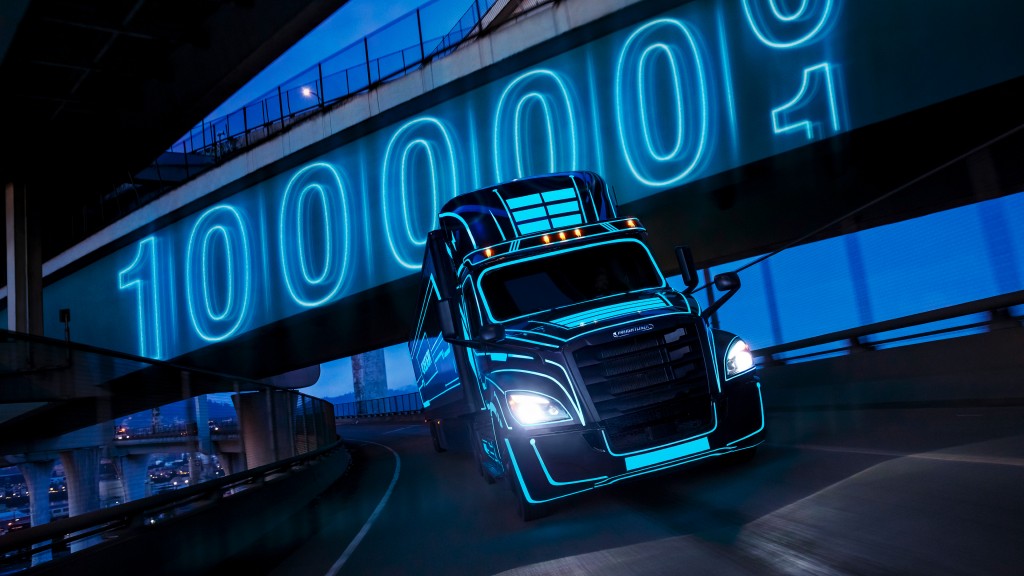
Daimler Trucks North America's Freightliner battery-electric Innovation and Customer Experience (CX) Fleets have reached one million miles of real-world usage, with fleets operating across the West Coast and Canada. With the opening of order boards for the eCascadia and eM2 earlier this year, DTNA is already seeing high demand for its electric trucks.
"We have reached a tipping point in our electrification journey," says Rakesh Aneja, Vice President and Chief of eMobility, DTNA. "After a million miles of learning in close collaboration with our valued customers, we are ready to move from prototype to scale -- from tens of customer experience trucks to hundreds of production units. We remain committed to continuously improve our vehicle technology, reduce cost of ownership, and support infrastructure development -- the required trifecta for a successful electrification transformation."
Comprised of over 40 battery electric Freightliner eCascadias and eM2s, the Freightliner Electric Innovation and CX Fleets have transformed the testing process by putting trucks into the hands of almost 50 customers to accumulate experience while performing real work, in real fleets, and real commercial vehicle applications.
Freightliner's Electric Innovation Fleet began in 2018 with electric trucks running drayage and regional haul routes in Southern California with Penske and NFI. The CX Fleet followed in 2020 with additional vehicles, which have been rotating between various customers in both the U.S. and Canada for the past year. Both fleets have now hit one million accumulated testing miles.
From collecting driver feedback, comparing the relative impact of driver behaviour, temperature, weather, and weight between multiple fleets and duty cycle, to assessing wear, testing charging equipment behavior, and readying the service network, DTNA has gained many operational learnings that will apply to the production vehicles to be delivered to customers in late 2022.
Andreas Juretzka, Head of Electric Mobility Product Development at DTNA: "Our rigorous testing has revealed powertrain and auxiliary components, including HVAC, thermal management and low voltage electrical, are high performing and more than up to the job. One lesson stands out in particular: the importance of regenerative braking to maximize range. Across the pilots, the average recuperation ratio was 20-25 percent, with some drivers achieving even up to 30 percent."
Testing electric trucks in real conditions with real fleets has validated and reaffirmed many of the expected benefits of electric trucking from reduced driver fatigue to minimal noise and vibration.
Electrification beyond the vehicle
DTNA's commitment to electrification goes beyond the truck - with the addition of the in-house Detroit eConsulting team, DTNA's customers will see a streamlined end-to-end process as they electrify their fleets and navigate charging infrastructure. The Detroit eConsulting team navigates some of the key challenges fleets will experience, including route assessment, coaching driver behaviour, optimizing in-cab experience, and planning and installing charging equipment.
In May of this year Detroit also launched Detroit eFill chargers, a full line of commercial vehicle charging stations designed for seamless integration with the Detroit ePowertrain found in the Freightliner eCascadia and eM2 trucks. Detroit eFill stations were developed in partnership with Power Electronics, the leading North American supplier of converters for utility scale solar, and feature the ability to charge a wide range of electric vehicles from other brands.




